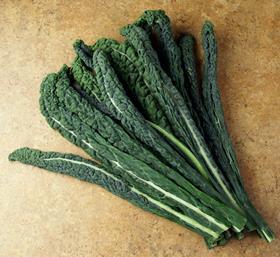
Long predicted to benefit from the consumer health trend, the organics sector appears to have finally kicked into gear with a “phenomenal” 11.5 per cent rise in value over the last 12 months.
Matched by an 11 per cent volume increase, the organics category is now worth £200 million, driven by shoppers buying more organics and new shoppers entering the sector [KWP 52 w/e 13 September].
Momentum is being supported by the whole supply chain – retail promotions are helping to counter price as the most common consumer obstacle, suppliers are expanding ranges and proactively countering pests, while consumers are choosing organic produce over conventional as part of a growing awareness about health.
“The two stand outs in the market are the organic brassicas and organic roots categories,” says Eddie Wilkinson, head of category at Produce World.
“Organic brassicas have attracted more customers to the category through organic broccoli, while organic root performance has been driven by people buying sweet potatoes and carrots more often.”
Wilkinson says kale and sweet potatoes are in the strongest YOY growth, following the success of their conventional counterparts, although they remain a small percentage of the organic veg market with kale at 0.9 and sweet potatoes at 2.5 per cent.
Finn Cottle, trade consultant at the Soil Association, says the promotional campaign Organic September was well supported, with retailer promotions working well to lift sales.
“Organic produce has also seen an upturn in the 12 weeks to early October: the fruit category has been performing extremely well during 2015 and now the vegetable category is also back into steady growth despite continuing deflation on the non-organic products,” she says.
“Given that approximately six out of 10 customers see price as being an obstacle to purchasing organic, it is understandable that simple discounts work well for produce bringing down the price differential between organic and non organic. Lapsed consumers are more likely to re-evaluate their purchasing choice when there is money off.
“We know that organic offers a solution in many respects, less pesticides, non-GM and greater farm assurance – all key motivators for today’s shoppers.”
Increased shoppers and higher purchase frequency has meant the organic berry market has grown ahead of total organic fruit, with sales up 22.8 per cent to 11 October 2015, organic berry producer Haygrove says. “We saw a price increase on organic strawberries, up 10.6 per cent over 2014. But there was no price change in organic raspberries over 2014,” a spokesperson tells FPJ. “The organic berry category should continue to grow. Like all organic products, berries need to be responsive to channel shifts such as remodelled hypermarkets, online, high street value retailers, convenience store expansion, and look at snack and convenience organic berry options.
Reflecting the optimism in the sector, salad and vegetable giant G’s expanded its organic range this year and added more growers to its producer organisation G’s Growers. The company’s head of organics, Mark Haynes, says: “G’s sees a positive future for organics across all channels. Multiple retailers continue to re-focus on organics, independent retailers continue to add theatre and service-based points of difference and the box schemes are also showing customer growth.
“We are also seeing an increased demand from foodservice and processors for organic produce to be used as ingredients in further processed organic products such as juices and prepared foods.”
Haynes says this year has been “one of the worst in the past seven years for aphids”, leading to challenging supply periods for leafy crops, while John Sedgwick, head of agronomy at Produce World, says the arrival of carrot willow aphids in early summer required the encouragement of predators such as lacewings and ladybirds, particularly in the eastern counties. Sedgwick points out that pests and diseases are always a challenge to organic growers, but the new National Living Wage will highlight this as organic businesses rely on hand weeding of crops.
“Growers are looking hard at their options of investing in mesh to physically exclude pests from carrot crops to give sustainable and resilient control.
“Hand weeding is a fact of life in all organic production, and growers are looking at configurations and machinery to automate this process to manage these costs where appropriate,” he says.



